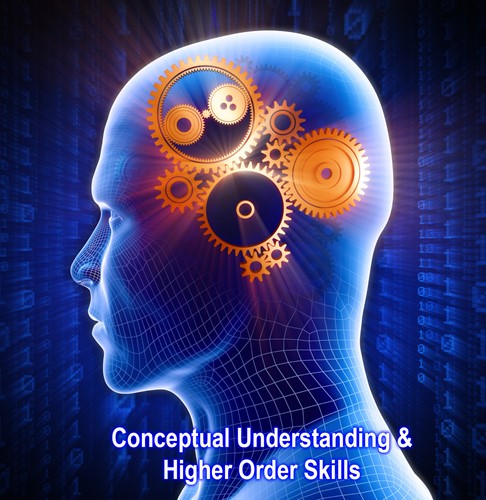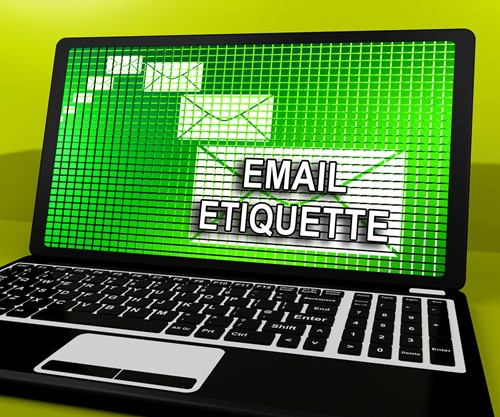For literacy teaching, the asynchronous nature of emails in the classroom can be a very useful tool. Real written communication can take place in the classroom and the immediacy of feedback from the email can motivate students to write.
Today, email and texting have become a highly significant mode of social communication for young people which is why it is important than in school email texts should always be carefully written – a technique that must be taught in literacy lessons.
Follow these teaching strategies literacy to enhance learning through email.
As children develop their speaking and listening skills much more rapidly than they learn to write (Rudd & Tyldesley, 2006), email aids in the development of writing skills as they learn to write for a meaningful audience.
What are the concepts involved?
Conceptual understanding underpins the learning of every ICT technique. Concepts can be assessed by determining whether students have made any mistakes or misconceptions. Effective questioning and discussions is a great way to achieve this.
As with other programs, conceptual understanding is essential if they are to develop their ICT capability. The concepts involved in the use of emails include:
- It is a message comprising of an address and content;
- Emails are stored on a server until you are ready to read them;
- There is a sense of audience and etiquette required;
- Always keep in mind and remember who will be reading the email you send.
The learning of concepts also helps when the technology in the room lets you down and doesn't work! Students don't need to sit at a computer to develop their ICT capability. You can enhance their conceptual understanding and higher order skills by whole-class questioning. Group discussions of the processes can also be carried out along with the teacher modelling planning, hypothesising and evaluating.
ICT Techniques learned
Along with word processing skills, students will learn the following techniques associated with the use of the email program.
- New message;
- Send message;
- Read message;
- Copy to;
- Reply/reply to all/forward;
- Organisation of messages;
- Filtering/directing;
- Distribution list;
- Discussion list;
- Conference;
- Attachments;
- Address book;
- Signature;
- Find by send/topic/content.


Classroom Integration
Email safety is very important for students to learn. Here as some guidelines:
- Don’t give out personal information to strangers in email or chat rooms;
- People may not be who they claim they are;
- Bad messages should be reported to a responsible adult straightaway. Don’t respond to them;
- Remember that what you are doing in writing in an email is public;
- Open discussion is a great safeguard.
Ground Rules
- What language is appropriate in emails?
- Names or pen names must always be used, and email should always be addressed to a specific recipient, either an individual or whole class;
- When can email be written, sent or received?
- Should email (and any attachments) be printed out or stored electronically?
Finally, Rudd and Tyldesley (2006) give some tips for starting an email project. They believe that it should be planned very clearly and that you need to focus on the content rather than the medium of communication. Email projects work well when there are groups of students who are working on the same topic. Other reasons may include:
- The need to communicate without delay;
- The opportunity to share draft versions of work and;
- The opportunity to exchange materials in different formats such as pictures, text, sound, and multimedia.
The nature of Literacy with ICT
Today, ICT such as word processor, emails, and blogging has resulted in another profound way in that we learn. As a teacher in primary school, you probably expect work to be word-processed by students. Such ICT tools used in society has meant that there is a new form of literacy around brought on by the development of ICT. New literacy such as the Internet, digital video, CD ROMs, and so on, consequently prompts innovative teaching strategies for literacy with ICT.
Through joining this literacy workshop for primary school teachers, you will be able to embed teaching strategies in literacy such as:
- Assess literacy when ICT is integrated;
- Employ formative assessment techniques to determine a student's capabilities in ICT.
- Develop meaningful literacy with ICT activities.
- Embed instructional teaching strategies for literacy with ICT.
- Plan for learning progression in literacy AND ICT capability.
These are just some of the teaching strategies in literacy that not only will you be able to get easy access to in the literacy workshop for teachers, but also in the FREE literacy with ICT teaching resources.
It comes equipped with all you need to know to successfully make those instructional teaching strategies for literacy development make an impact on student attainment.
Click the button below now to learn more about these teaching strategies in literacy or download the book today.




Email Etiquette for Students
When using email in education, particularly when teaching primary literacy it will be important for you to facilitate the learning of email etiquette for elementary students.
Why teach email etiquette?
Students living in an online world need to be good communicators and it is crucial that they learn the best practices when using this online tool. These skills will not only help them communicate to their peers during their education but also become an important form of communicating in the workforce.
You can help learn how to write properly, coherently, and using the correct grammar which makes it a great tool for teaching primary literacy. The skills that students learn by using email in education can also be transferred across the key learning areas when they need to communicate to their peers about activities and projects that they are working on.
Email etiquette for elementary students (lesson plan)
Email etiquette for elementary students (Assignments)
So what is email etiquette for elementary students?
Elementary or primary school is the best place for you to embed these teaching strategies literacy. It is a great rule of thumb to start young so that the advice you provide begin with the basics, the very foundations to effective communication with email in education.
In elementary school when teaching primary literacy, the following examples include:
- Using proper sentence structure.
- Spell checking.
- Privacy – for both students and recipients.
Later in Middle school, examples include:
- Thinking before clicking send.
- What to share and not to share.
- Basic courtesies in email and texting.
And then in Secondary education (high school), examples include:
- When to email and text and when not to.
- Not all communications are emojis or acronym based.
- How to clearly communicate what you mean.
Introducing Email etiquette for Elementary Students
When introducing email etiquette it is a good to perhaps with upper primary grades in Year 4, 5 and 6. Start with a T-chart with the Do’s and Don’ts of email etiquette. These include:
- Do have a clear subject line
- Do use a professional salutation.
- Do proofread your message.
- Do reply to all emails.
- Do keep private material confidential.
- Don’t forget your signature.
- Don’t use humour.
- Don’t’ assume the recipient knows what you are talking about.
- Don’t send angry emails.
Your students can take down notes in their workbooks and ensure that you discuss each point with them. Don’t forget to bring up the point about SPAM mail!
Spend some time showing them good examples of emails.
Here are 4 of the best practices of email etiquette for elementary students:
- Establish criteria – provide students with guidelines.
- Use engaging examples – use humour instead of shaming. Keep it light.
- Provide an authentic audience – actually send the email to a recipient.
- Give immediate feedback.
Email in education can improve primary literacy across all learning areas. Remember to include email etiquette for elementary students in your planning so it seamlessly permeates their learning. Email etiquette for elementary students is important we continue to move forward into a technological era that depends on using technology such as email for communication.